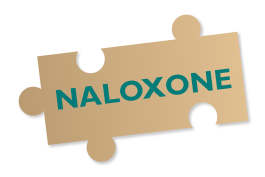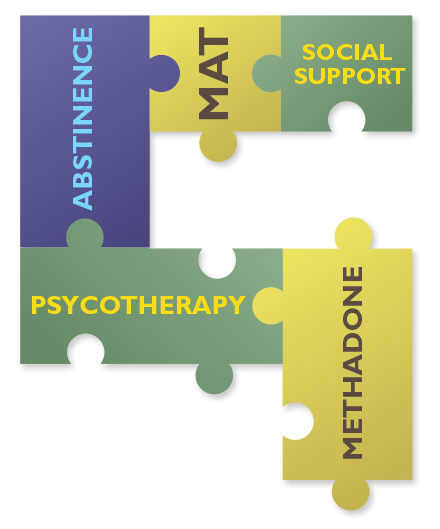Drug overdose deaths nearly tripled in the United States between 1999 and 2014. The majority involved opioids.1 The need to prevent overdose-related deaths is an absolute priority. Comprehensive strategies to address the opioid epidemic are moot if the patients are not alive. But are we leaning on naloxone too much? What does the evidence say?
Explore This Issue
ACEP Now: Vol 39 – No 02 – February 2020Naloxone—a mu opioid receptor competitive antagonist—has the ability to reverse the clinical effects of an opioid overdose. Naloxone is easily administered and nonaddictive and poses no health risks to an opioid-naive patient. Over the last decade, naloxone availability has widened nationwide in a variety of environments.
Two areas of substantial interest are expanding bystander access and extra-clinical access. Layperson (or off-duty provider) availability may be possible through institutional programs that dispense naloxone. Access outside of health care settings is possible via prescriptions for naloxone or, in some jurisdictions, via a centralized standing order. This means that anyone can obtain naloxone from a pharmacy and deliver it to a patient any time it is deemed necessary.

ILLUSTRATION: Chris Whissen & shutterstock.com
The necessity of this approach extends globally. In 2014, the World Health Organization conducted a systematic review that concluded “people likely to witness an opioid overdose should have access to naloxone and be instructed in its administration to enable them to use it for the emergency management of suspected opioid overdose.”2 Since then, a broad range of literature has emerged evaluating naloxone distribution and education programs, supporting the general conclusion that, due to naloxone’s lifesaving potential and favorable safety profile, bystander access and use should be implemented while data from more rigorous and longer-term evaluations are gathered.
What the Data Say

ILLUSTRATION: Chris Whissen & shutterstock.com
Thus far, the data from available studies largely focus on outcomes that are merely surrogates for success. When scrutinized, they do not always correlate with the outcome of interest: saving a life without onloading undue risk (eg, favorable risk-benefit ratio). The lack of outcome data and number of simultaneous variables followed complicate the determination of naloxone’s impact on public health. Although some studies suggest naloxone availability is associated with lower deaths from opioid overdose, the data are limited to retrospective studies and highly confounded.3 Randomized, controlled trials would provide more information but would be very difficult, if not unethical, to do. Overall, the studies and recommendations have appropriately encouraged policymakers and funders to increase the availability of bystander naloxone.To be clear, naloxone dispensing and prescribing should unquestionably be expanded until better data suggest otherwise.
Here’s where things get complicated. Yes, saving an individual from a fatal overdose is not only a worthwhile goal but an essential responsibility of our health care system. What muddies this pursuit is only four out of 100 opioid overdoses are fatal.4
This number may overestimate naloxone’s importance because of the tremendous difficulty determining whether an opioid overdose would have been fatal without it. Many patients demonstrating an opioid-like toxidrome appear moribund, but in reality, the vast majority will soon awaken. While a physician utilizes extensive training and physiological monitoring to determine the risk of impending death, laypersons with naloxone have to make the same decisions often without ample clinical experience to guide them. When naloxone is given to people who would not likely die (and therefore derive no benefit), well-meaning bystanders onload the risk of precipitated withdrawal. The risk of this is not inconsequential. Precipitated withdrawal increases catecholamine concentrations and can cause pulmonary edema, myocardial infarction, and intracranial hemorrhage. Furthermore, the associated vomiting may lead to aspiration if the patient does not awaken, often due to the presence of a cointoxicant. Additionally, the dangers around precipitated withdrawal may actually be increasing over time. How? Opioid withdrawal occurs proportionate to the degree of dependence and the dose and rate of naloxone administration. Modern opioid use disorder patients may be more physiologically at risk than patients in the past were. This may stem from changes in methadone use, higher purity of heroin, and the availability of potent fentanyl analogs.5
Naloxone Can’t Do It Alone
Naloxone is the just beginning of the solution, even if it reverses a fatal overdose as intended. One in 10 patients treated with naloxone dies within one year, with a standardized mortality ratio of 24.6,7 Regardless of the source of patients’ opioid use, engaging them in a medication-assisted treatment program is critical to preventing additional adverse events. Unfortunately, these interventions are often unavailable and underutilized.8
Meanwhile, naloxone is beginning to be viewed by outside observers as something more than it may be. For example, every naloxone administration is regularly reported as a “save” from an “overdose death.” There are complexities in both of these phrases. As detailed above, naloxone has a very small chance of actually “saving” any specific individual from death, and its use would be better phrased as “reversed an opioid overdose.” Even this is complicated since there is no correct amount of heroin or prescription opioid when the cause of the use is abuse; by those standards, any amount is technically an “overdose.” Furthermore, naloxone is often stated to “reduce the risk of overdose.” However, there is no evidence that naloxone can or will decrease the risk of opioid overdose, only that it may reduce the risk of opioid overdose fatality following an overdose.3 As innocent and well-intended as public health messaging may be, misrepresenting the effect of naloxone in the media leads lawmakers and the general public to overestimate the true benefit and underestimate the true risk. The downside of this is that other equally important approaches to the opioid epidemic may be getting less attention and funding.
A discussion about naloxone would not be complete without mentioning risk compensation, where increased access to naloxone may actually encourage users to engage in higher-risk behavior. Two economists recently stirred controversy after publishing an article in which they concluded that naloxone may increase opioid abuse by “reducing the risk of death per use, thereby making riskier opioid use more appealing, and saving the lives of active drug users, who survive to continue abusing opioids.”9 Some critics correctly responded that naloxone has been inadequately studied in this context, and some evidence points to the contrary. However such effects are well-described in the public health literature in other contexts such as airbag use and public health warnings of potent batches of drugs.10,11
Moreover, despite expanding training opportunities for naloxone administration, the opioid overdose fatality rate continues to rise. The apparent paradox is the number of naloxone distribution programs increases in parallel with the number of opioid overdose deaths.12 Concerning as that may be, this observation cannot imply causality. Did naloxone distribution programs respond to an increasing demand, or did overdose deaths increase due to increased access to naloxone? However, this finding is itself confounded, and the increase in deaths may be due to the changes around decreased opioid prescriptions (shunting some of those patients to heroin) and from heroin to synthetic opioids such as fentanyl.
While naloxone’s role in overdose risk is still unclear, despite its increased availability, about half of those who die following naloxone treatment do so within a month of treatment.6 This clearly illustrates the need for further intervention, regardless of naloxone’s influence on future overdose.
What Else Is Needed
Any comprehensive solution to this nationwide crisis must be three-pronged: ending the initiation of patterns of hyperalgesia, abuse, and addiction; preventing harm to allow treatment access; and restoring normalcy to the lives left tattered through treatment initiatives. Recovery programs aim to provide long-term stability through social support systems or, more successfully, evidence-based medication-assisted treatment programs. However, the reality is that those with opioid use disorder are constantly at risk of overdose, whether due to a highly potent or adulterated illicit supply, loss of tolerance during abstinence or treatment, or an attempt to pursue the elusive “next best high.”
Naloxone is a drug with the ability to save lives in the hands of bystanders. But it is just one piece of the puzzle, and the long-term consequences of this public health initiative are still unknown. Additionally, the adverse effects have been understated and the benefits overstated. If we are to address this epidemic realistically, we need to be honest about the tools we have at our disposal. Naloxone is just the beginning of the answer to the opioid epidemic. We can manage precipitated opioid withdrawal and cannot resuscitate someone who has died, but real solutions to prevent death in those with opioid use disorder include expanding harm reduction efforts; implementing medication-assisted treatment programs; connecting patients to support programs; and being mindful of how powerful a compassionate, nonjudgmental, nonstigmatizing, and supportive system can be to the health of our patients.
Mr. Lozo is a medical student at Rutgers New Jersey Medical School in Newark.
Dr. Nelson is chair and professor in the department of emergency medicine at Rutgers New Jersey Medical School.
References
- Rudd RA, Seth P, David F, et al. Increases in drug and opioid-involved overdose deaths – United States, 2010-2015. MMWR Morb Mortal Wkly Rep. 2016;65(50-51):1445-1452.
- World Health Organization. Community Management of Opioid Overdose. Geneva, Switzerland: World Health Organization; 2014.
- Walley AY, Xuan Z, Hackman HH, et al. Opioid overdose rates and implementation of overdose education and nasal naloxone distribution in Massachusetts: interrupted time series analysis. BMJ. 2013;346:f174.
- Espelt A, Barrio G, Álamo-Junquera D, et al. Lethality of opioid overdose in a community cohort of young heroin users. Eur Addict Res. 2015;21(6):300-306.
- O’Donnell JK, Halpin J, Mattson CL, et al. Deaths involving fentanyl, fentanyl analogs, and U-47700 – 10 States, July-December 2016. MMWR Morb Mortal Wkly Rep. 2017;66(43):1197-1202.
- Weiner S. Research offers new insights into the opioid crisis. ACEP website. Available. Accessed Jan. 24, 2020.
- Olfson M, Crystal S, Wall M, et al. Causes of death after nonfatal opioid overdose. JAMA Psychiatry. 2018;75(8):820-827.
- Frazier W, Cochran G, Lo-Ciganic WH, et al. Medication-assisted treatment and opioid use before and after overdose in Pennsylvania Medicaid. JAMA. 2017;318(8):750-752.
- Doleac JL, Mukherjee A. The moral hazard of lifesaving innovations: naloxone access, opioid abuse, and crime. 2018. SSRN website. Accessed Jan. 24, 2020.
- Abdukadirov S. The unintended consequences of safety regulation. Mercatus Center website. Accessed Jan. 24, 2020.
- Mathai D, Gordon M, Muchmore P, et al. Paradoxical increase in synthetic cannabinoid emergency-related presentations after a citywide ban: lessons from Houston, Texas. Bull Menninger Clin. 2016;80(4):357-370.
- Centers for Disease Control and Prevention. Community-based opioid overdose prevention programs providing naloxone – United States, 2010. MMWR Morb Mortal Wkly Rep. 2012;61(6):101-105.
Pages: 1 2 3 4 | Multi-Page





No Responses to “Naloxone Is Just One Piece of the Opioid Puzzle”